Top 5 BMEcat converters in comparison – advantages, functions & tips
The digitization of purchasing processes between business partners (B2B) is advancing steadily. This requires the upload of product data to online shops, e-procurement systems, or e-marketplaces. This is where BMEcat converters come into play. Learn all about the best BMEcat converters for your company. I compare the top 5 providers and explain how the software automates your product data management, saves costs, and increases efficiency.
What is a BMEcat converter?
A BMEcat converter, also known as a BMEcat generator or BMEcat software, helps convert product data into XML format. XML is a structured data format that exchanges information between IT systems. With BMEcat, the structure is standardized according to the specifications of the German Association for Materials Management, Purchasing and Logistics (BME). BMEcat has become the standard for exchanging product information in industry. A BMEcat converter translates various file formats into the electronic catalog of the same name. Its basic functions include creation, validation, and distribution. We will look at how these functions interact in the next section.
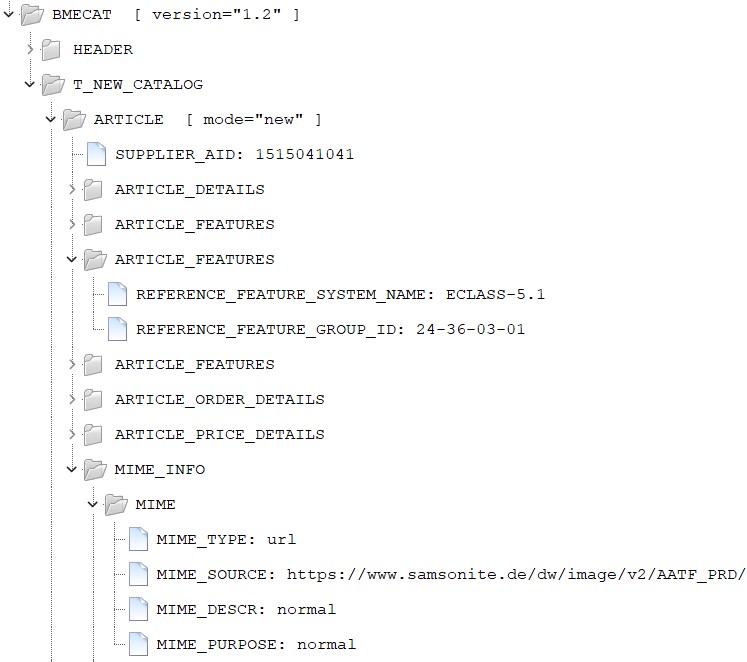
How does such software work?
To create a BMEcat, product information such as images, texts, article characteristics, customer prices, and classifications (e.g., E-CLASS or UNSPSC) are required. These are made available via import channels. Depending on the maturity of the software, various formats such as Excel, CSV, JSON, or XML can be imported. The BMEcat converter handles the “translation” into BMEcat. Validations are performed during this step. These are based on the target system or customer requirements. A classic example is units of measure, known as UOMs. To illustrate this, let’s take the following example. In the import file, the designation “ST” is specified for the unit of measure “piece.” However, the target system requires “PCE.” Such differences can be analyzed by the validation and translated into the language of the customer system. Once the catalog has successfully passed the check, it moves on to the third step, “Distribution.” If the target system allows automatic uploads, the software can do this automatically.
Infrastructure of a BMEcat converter
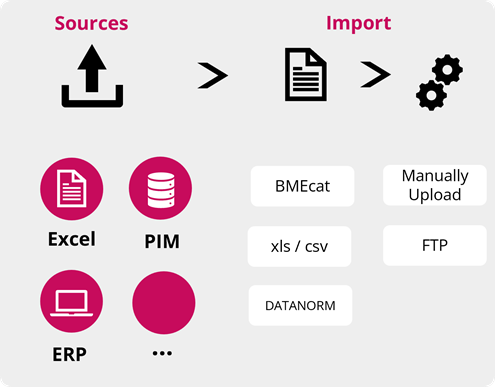
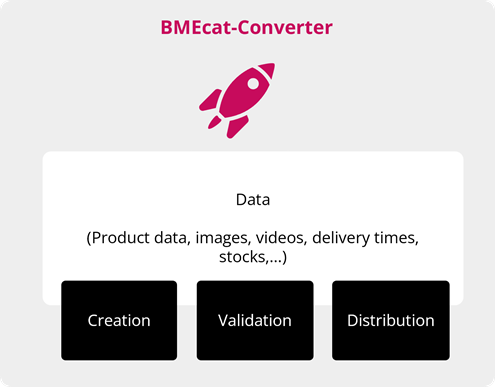
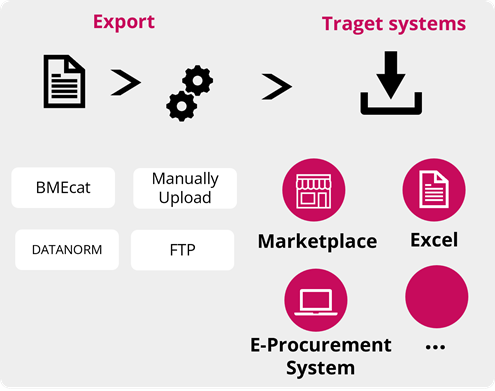
What are the advantages of introducing a BMEcat converter?
A BMEcat converter supplements existing solutions such as PIM systems (Product Information Management) or ERP systems with the following advantages:
- Improved data quality: Standardization of BMEcat allows product data to be positioned in the right place. This leads to improved quality, as the information arrives correctly in the target system and has a positive impact on search results. It also helps to avoid manual errors.
- Increased efficiency: Automating the creation and management of electronic catalogs saves time and resources.
- Seamless integration: BMEcat’s XML-based format ensures seamless integration with existing systems such as ERP (enterprise resource planning), PIM (product information management) systems, e-marketplaces, and e-procurement systems. This optimizes data flow and eliminates the need for manual data maintenance.
- Cost savings: Process costs can be reduced by minimizing errors through automated validation and process optimization. By process costs, I mean the amount of working time spent on maintaining, creating, and distributing BMEcats.
- Customer loyalty: By uploading product data to purchasing systems, customers can place orders quickly and easily. In addition, manual input errors are avoided and customers have access to up-to-date information.
How is BMEcat software developing?
In addition to BMEcat, there are other electronic catalog formats. These include Datanorm, Ariba cif, and Coupa’s own CSV format. There are also numerous API interfaces that exchange product data between systems in real time. Custom CSV formats are also on the rise, posing major challenges for data suppliers. To cope with this complexity, BMEcat software solutions are evolving into e-catalog management solutions. In addition, AI (artificial intelligence) will simplify the “refinement” of electronic catalogs in the future. One possible application is the automated assignment of classifications (e.g., E-CLASS, UNSPSC, ETIM) at the item level. Initial approaches are also being taken in the creation of texts. This allows individual texts to be created automatically for target groups and systems.
Infrastructure of e-catalog management solutions
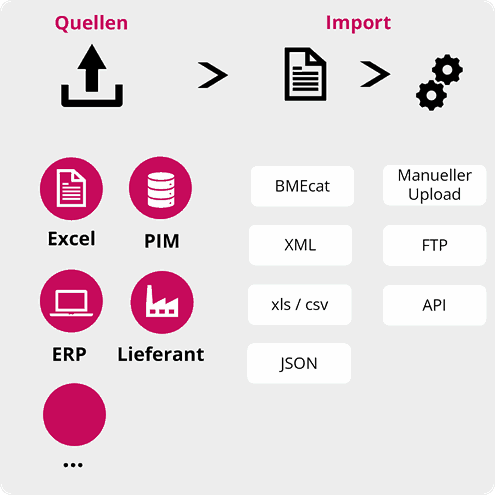
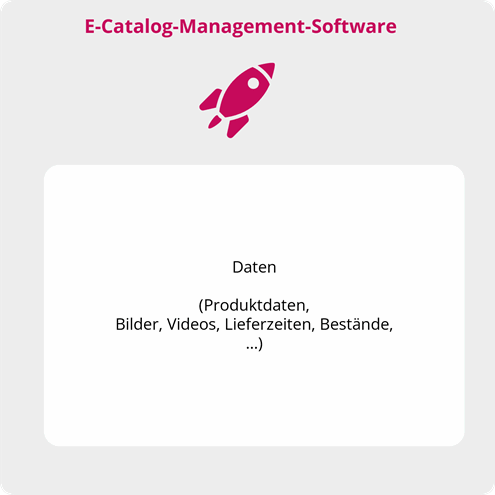
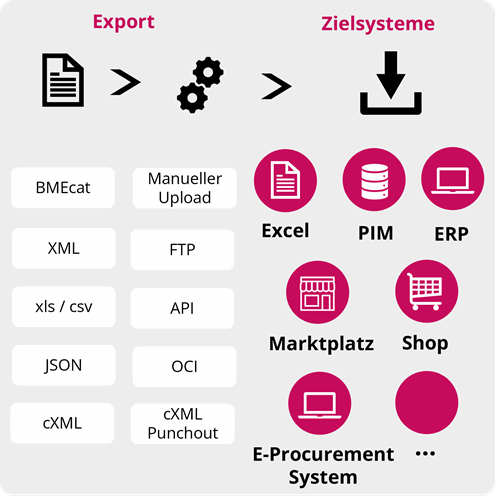
Top 5 BMEcat converters at a glance: e-proCAT, nexoma, Pro3Con, Storeserver, and PIM providers
e-pro – e-proCAT
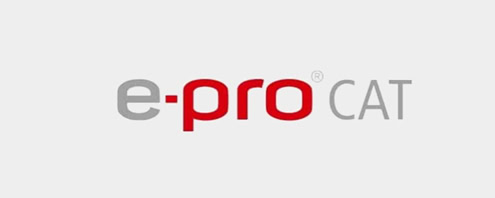
e-pro CAT GmbH is one of the leading providers of catalog solutions with over 1,000 customers. With its roots in the Fraunhofer Institute IAO and as a co-founder of the BMEcat standard, e-pro CAT GmbH has over 20 years of experience in the development of electronic catalogs.
Selected features:
- Classify from E-CLASS to UNSPSC and from UNSPSC to E-CLASS
- Extensive validation options
- Deleting links to invalid MIME files. MIME is used to process images, data sheets, and other attachments.
nexoma – CatalogExpress
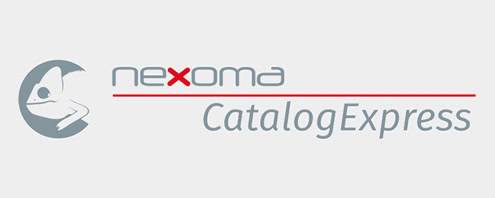
The interdisciplinary team at nexoma combines expertise in project management, software development, architecture, design, and media design. Their focus is on developing and implementing powerful software solutions for product data management. With its CatalogExpress software solution, nexoma supports companies in the efficient transformation and distribution of data across various channels.
Selected features:
- Conversion into complex standards such as FAB-DIS, BMEcat ETIM, or ETIM xChange
- Standard interfaces to PIM systems such as Akeneo, Apollon, Contentserv, ViaMedici, Pimcore or the Shopware store system
Pro3Con – Primus Catalog

Pro3Con GmbH is a software provider in the field of automated product data distribution. The focus is on providing customized solutions for the creation and integration of e-catalogs and web shop systems. With a deep understanding of the digital transformation of business processes, Pro3Con supports companies in making their procurement and sales processes more efficient.
Selected features:
- User-friendly software interface
- In addition to the export formats Ariba Cif, Coupa CSV, and BMEcat, a punchout catalog or OCI interface can be created in just a few minutes.
- Automated data distribution via FTP server
Storeserver
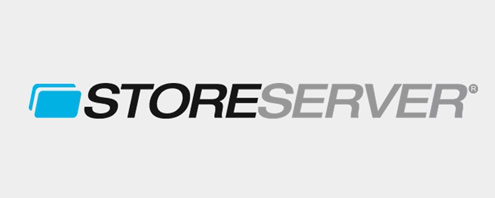
Founded by managing director Dipl. Inf. Sven Sprandel in close cooperation with Fraunhofer IAO, the company’s origins lie in the development of the openTRANS/BMEcat exchange format. This was implemented as the first priority with the Storeserver BMEcat Generator and has been continuously developed ever since.
Selected features:
- Converter works on an Excel basis and can be used locally
- Flexible extension of BMEcat fields
PIM systems (Product Information Management)
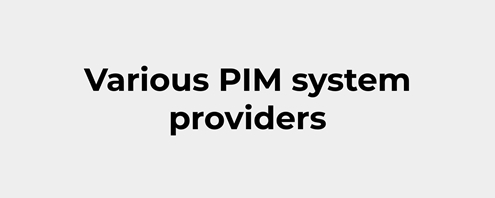
Many PIM providers have implemented the BMEcat format. Unlike BMEcat converters, PIM systems are geared toward internal logic. These reach their limits as soon as customers and target systems make specific demands. The solutions can be requested and implemented as programming requirements through change requests. If this is too time-consuming and expensive, the specialist department can rework it manually.
Selected features:
- BMEcat standard with internal logic
Five important steps for the introduction of BMEcat software
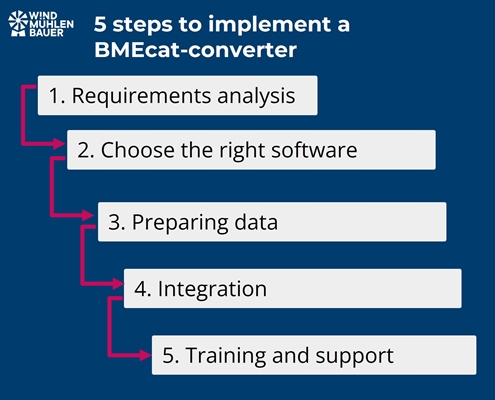
- Needs analysis: Before implementing a BMEcat converter, it is important to assess your business needs. Determine the scope of your product portfolio, the complexity of the product data, and the integration requirements.
- Selecting the right software: Based on the needs analysis, it is important to select the right software. Important criteria include user-friendliness, existing interfaces, scalability, the provider’s knowledge of the target channels, joint development potential, and the pricing model.
- Data preparation: Product data is essential. Prepare your existing product data for migration. This may include cleaning up data, standardizing formats, and ensuring that all necessary information is complete and accurate.
- Integration: Integrate the BMEcat converter into your existing systems. It is best to get your IT colleagues on board right from step 1. To reduce manual tasks, seamless integration into existing systems is recommended. If you mainly work with Excel, you can start integrating the target systems right away.
- Training and support: Provide training for your team so that they can learn how to use the new software. Also, ensure that they have access to ongoing support to resolve any issues that may arise.
Conclusion
The introduction of a BMEcat converter is a valuable tool for establishing professional product data and catalog management. It allows manual and small-scale work steps to be automated piece by piece. This results in up-to-date data in the target systems and increased customer satisfaction.
With standardized data formats, comprehensive functions, and scalability, software providers for the creation of BMEcats offer numerous advantages, including improved data quality, increased efficiency, and cost savings. Careful needs analysis, selection of the right software, and focused implementation can achieve rapid optimizations.
In an age of advancing digital transformation and the growing importance of e-commerce, rapid, high-quality updates to product data are the foundation of sales. Are you ready to optimize your digital sales processes and reap the benefits of BMEcat software?

Peter Prütting is an expert in value-oriented and digital business development. With over 15 years of sales experience from the perspectives of wholesale, manufacturing, and e-marketplaces, he takes a holistic view. His colleagues value him as a customer-centric and focused leader who guides teams through digital transformation. Away from his daily work, he recharges his batteries by mountain biking.
FAQ – frequently asked questions
A BMEcat converter is a piece of software that converts product data into the standardized XML format BMEcat. This format enables the exchange of product information between different systems in the B2B sector. The software automatically validates and distributes the data.
A BMEcat converter imports product information from various file formats such as Excel or CSV and translates it into BMEcat format. The data is checked for errors and adapted to the requirements of the target system. Once successfully validated, the data can be distributed automatically.
A BMEcat converter improves data quality, automates processes, and thus saves time and money. It also enables seamless integration into existing systems and increases efficiency in product data maintenance.
The selection depends on various factors such as the complexity of the product data, the integration requirements, and the scalability of the software. Other important criteria include user-friendliness and interfaces to other systems such as PIM or ERP.
BMEcat software is evolving into comprehensive e-catalog management solutions that support other catalog formats and APIs in addition to the BMEcat format. In the future, AI will be used to automate classification and text generation, further simplifying the process.
Sources
- E-Pro, software solution: https://e-pro.cat/e-procat/
- Storeserver, software solution: https://www.storeserver.de/bmecat-generator/
- Pro3Con, software solution: https://pro3con.com/produkte/bmecat-software/
- Nexoma, software solution: https://nexoma.de/catalogexpress/